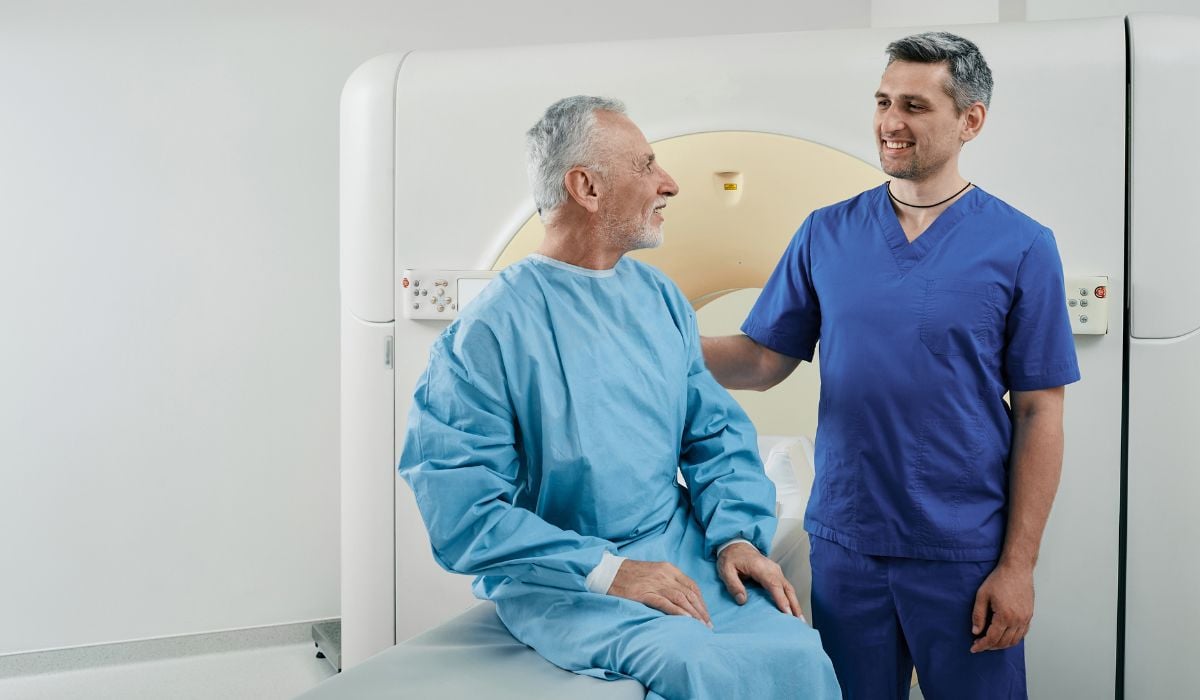ATTN: As of June 9, our Harbour View office in Suffolk has relocated to 3910 Bridge Road, Ste. 400. 2025 UPDATES: Please bring all new insurance cards to your next appointment and verify your address and phone number when you check in at the front desk. Medicare Fraud Scheme Regarding Genetic Testing - Click Here

As treatments for lung cancer continue to advance, screening higher-risk patients to catch the disease at an earlier stage has become even more crucial.
Lung cancer is the leading cause of all cancer-related deaths in the United States, taking more lives annually than breast, prostate and colorectal cancers combined. Although non-smokers can develop the disease, tobacco use is by far the most common cause.
Unfortunately, many cases of lung cancer are still diagnosed at a later stage. Concerning symptoms of lung cancer include shortness of breath, a chronic cough that lingers beyond a few weeks, chest pain, coughing up blood and unexplained weight loss.
Annual screening with a low-dose CT scan is currently recommended for people ages 50 to 80 who have smoked at least 20 packs of cigarettes a year, particularly if they still smoke or have quit within the past 15 years. The painless test uses a small amount of radiation to visualize lung tissue in greater detail than a regular X-ray can provide.
 "People who have had heavy exposure to second-hand smoke or who work in certain industrial settings may also be at risk for lung cancer, although they are not formally candidates for screening", says Dr. Jared Kobulnicky, MD, a medical oncologist and hematologist with Virginia Oncology Associates.
"People who have had heavy exposure to second-hand smoke or who work in certain industrial settings may also be at risk for lung cancer, although they are not formally candidates for screening", says Dr. Jared Kobulnicky, MD, a medical oncologist and hematologist with Virginia Oncology Associates.
“It’s a very important discussion to have with your primary care physician,” Dr. Kobulnicky notes. “Treatment options have improved tremendously for all stages of lung cancer, so we’d really like to increase the utilization of this effective screening tool.”
Along with surgery and radiation, most patients can benefit from newer immunotherapy and/or targeted therapies. These intravenous or oral medications aim to train a patient’s immune system to attack cancer cells or themselves work to destroy specific genes and proteins that fuel tumor growth.
“We’re able to help many more patients than we could in the past, and that progress is only going to continue in the future,” Dr. Kobulnicky says. “We have a huge opportunity to save more lives.”
Related reading: Additional Therapies Bring New Hope to Lung Cancer Patients
As for longtime tobacco smokers who may feel it’s too late to reduce their risk of lung cancer, research has shown that quitting at any point can help. And while more studies need to be done on vaping, a habit that has exploded in younger populations, physicians suspect that also will prove to be a risk factor of lung cancer.
Written by Alison Johnson while interviewing Dr. Jared Kobulnicky, a medical oncologist and hematologist with Virginia Oncology Associates. Dr. Kobulnicky sees patients at VOA’s Hampton and Newport News offices.